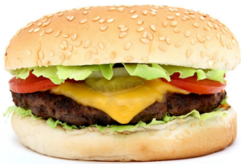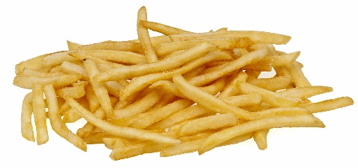Dec. 20, 2018 – Seeing pictures of food with calorie information not only makes food less appetizing but it also appears to change the way your brain responds to the food, according to a Dartmouth-led study published in PLOS ONE. When food images appeared with the calorie content, the brain showed decreased activation of the reward system and increased activation in the control system. In other words, foods that you might otherwise be inclined to eat became less desirable once the calorie content was displayed.
The study is the first of its kind to examine how your brain makes food choices when calorie information is presented. The results are timely given that earlier this year, certain food chain establishments had to comply with the U.S. Food & Drug Administration’s menu labeling law requiring the disclosure of calorie information on menus and menu boards. In addition, according to the Centers for Disease Control and Prevention, obesity affected nearly 40 percent of U.S. adults in 2015-16.
“Our findings suggest that calorie-labeling may alter responses in the brain’s reward system when considering food options. Moreover, we believe that nutritional interventions are likely to be more successful if they take into account the motivation of the consumer, including whether or not they diet,” says first author Andrea Courtney, who was a graduate student in the department of psychological and brain sciences at Dartmouth at the time of the study and is currently a postdoctoral student at the Stanford Social Neuroscience Lab at Stanford University.
Image 
| Image  |
Image  |
| From L to R: A cheeseburger, French fries and cherry cheesecake were among types of food images included in the study. (These are not the actual images the researchers used). Photos of the cheeseburger and French fries courtesy of Pixabay. Photo of cherry cheesecake by Robert Gill, Dartmouth College. |
For the study conducted at Dartmouth, 42 undergraduate students (ages 18 to 22) viewed 180 food images without calorie information followed by images with calorie information and were asked to rate their desire to eat the food while in a functional magnetic resonance imaging scanner (fMRI). The images were obtained from either the food pics database or popular, fast food restaurant websites that post calorie information. The 22 dieters and 20 non-dieters viewed the same set of images, including foods such as a cheeseburger, a side of French fries or a slice of cherry cheesecake. On a scale from 1 to 4 (1 = not at all, 4 = very much), they indicated how likely they would be to eat the food in the dining hall.
While dieters and non-dieters alike rated calorie-labeled foods as less appetizing, this effect was strongest among dieters. Further, the researchers analyzed responses in two brain regions that motivate eating behavior: the nucleus accumbens (NAcc) and the orbitofrontal cortex (OFC). Although all participants showed a decrease in activation in these areas when calorie information was present, dieters showed more similar activation patterns in the left OFC for calorie-labeled and unlabeled foods. This finding suggests that dieters may consider calorie information even when it isn’t explicitly present and builds on previous research suggesting that the presence of health cues can lead to healthier food decisions.
Image  |
| Figure 2 from the study. (A) Ratings of willingness to eat foods presented in images with NO CALORIES and with CALORIES. Willingess to eat was lower when presented with calories—and this difference was greater for dieters than non-dieters. (B) Food ratings by dieting status. Image provided by co-authors, Andrea Courtney, Emma PeConga, Dylan Wagner, and Kristina Rapuano. |
“In order to motivate people to make healthier food choices, policy changes are needed that incorporate not only nutritional information, including calorie content, but also a public education component, which reinforces the long-term benefits of a healthy diet,” added senior author Kristina Rapuano, who was a graduate student in the department of psychological and brain sciences at Dartmouth at the time of the study and is currently a postdoctoral student at the Fundamentals of the Adolescent Brain Lab at Yale University.
Courtney is available for comment at: acourtne@stanford.edu. In addition to Courtney and Rapuano, former undergraduate honors student in psychological and brain sciences at Dartmouth, Emma PeConga, now a graduate student in clinical psychology at the University of Washington, and Dylan Wagner, an assistant professor in psychology at The Ohio State University, also served as co-authors of the study.

